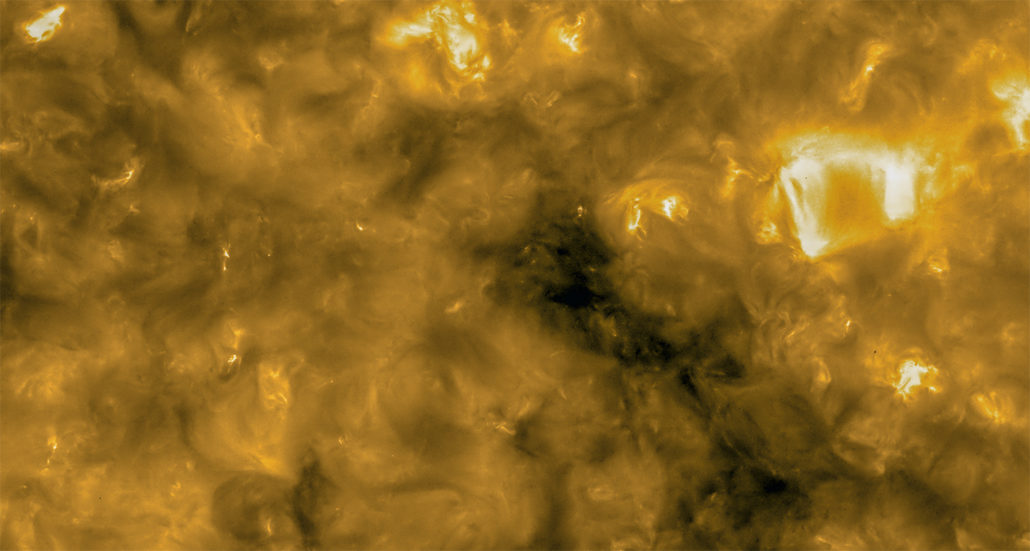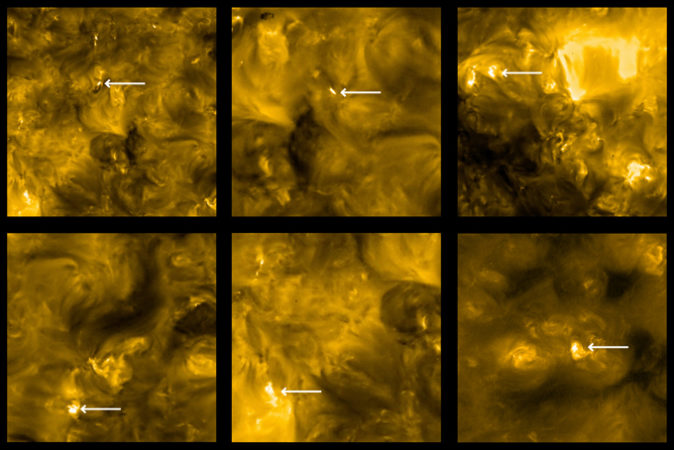Close-up of the sun reveals ‘campfires’
The tiny flares show up in the first photos from the Solar Orbiter spacecraft

This is one of the first images taken with the Solar Orbiter spacecraft. This ultraviolet image of the sun offers one of the closest views to date of our star.
Solar Orbiter/EUI Team/ESA and NASA, CSL, IAS, MPS, PMOD/WRC, ROB, UCL/MSSL
Share this:
- Share via email (Opens in new window) Email
- Click to share on Facebook (Opens in new window) Facebook
- Click to share on X (Opens in new window) X
- Click to share on Pinterest (Opens in new window) Pinterest
- Click to share on Reddit (Opens in new window) Reddit
- Share to Google Classroom (Opens in new window) Google Classroom
- Click to print (Opens in new window) Print
Get out the marshmallows and toasting sticks. The closest images of the sun taken so far are in. They show tiny flares called “campfires.” Astronomers announced the finding at a news conference on July 16.
The images are the first from the sun-watching spacecraft called Solar Orbiter. A joint project of NASA and European Space Agency (ESA), it snapped images of these never-before-seen campfire flares. The flares appear to be tiny cousins of the better known solar flares. Those are powerful magnetic outbursts. They shoot bright spurts of radiation into space, said David Berghmans. He’s a sun specialist at the Royal Observatory of Belgium in Brussels and described the flares in a news release.
Campfire flares, he explains, are a millionth to a billionth the size of typical solar flares. It’s not clear yet whether these flickers are scaled-down flares or something entirely new.
Either way, he and others think the campfire flares are important. They could help explain one of the biggest solar mysteries: the sun’s wispy outer atmosphere. This corona is hotter than the surface of the sun. In fact, it is millions of degrees hotter. Campfire flares might contribute to that heat. They exist all across the sun’s surface and could be a newfound source of energy adding to the corona’s heat.

“These campfires are totally insignificant each by themselves,” said Frédéric Auchère in the ESA news release. “But summing up their effect all over the sun, they might be the dominant contribution to the heating of the solar corona.” Auchère also studies the sun. He works at the Institut d’Astrophysique Spatiale in Orsay, France.
Auchère and Berghmans are two of the many scientists who use Solar Orbiter. This spacecraft launched February 9. It carries a host of scientific instruments to observe the sun and its surroundings. Among those instruments is a camera called the Extreme Ultraviolet Imager. Berghmans and Auchère are the lead scientists using its images. They spotted the campfires in images taken May 30. The spacecraft had been 77 million kilometers (around 48 million miles) from the sun. (That’s about half the distance from the Earth to the sun.)
Other spacecraft have swooped closer to the sun than Solar Orbiter. The Parker Solar Probe has gotten as close as 24 million kilometers from it. Parker will eventually fly to within 6 million kilometers from the sun. But at that distance, it will be too hot for cameras to work. So Parker can’t take photos.
Solar Orbiter’s new pictures, therefore, are the closest of the sun to date. They were snapped before the spacecraft officially began collecting science data. So more pictures are likely to come. Solar Orbiter’s formal mission starts in November 2021. It will study the sun for at least four years and come to within 42 million kilometers (26 million miles) of the sun. It also will be the first spacecraft to fly over the sun’s poles.